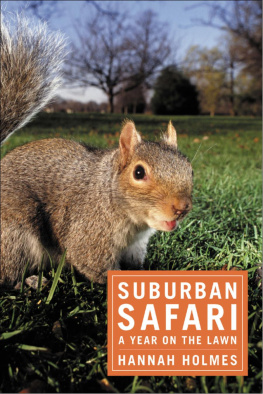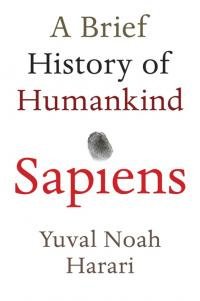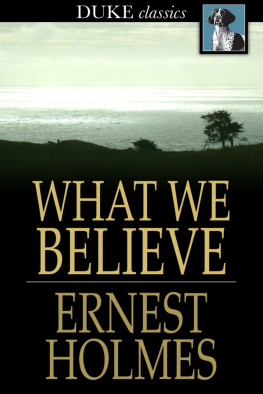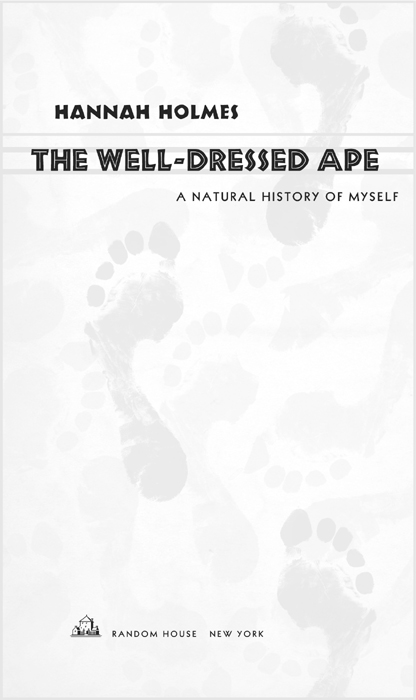INTRODUCTION
I am one of those people with a reputation for being a natural with children. Because I produced none of my own, my friends often make the observation with an air of puzzlement, after Ive beguiled their offspring out of a sulk or into a game quieter than hurling pot lids.
The honest explanation has seemed too impolite to share: Of course Im fluent in child. Ive spent my whole life around wild animals.
I grew up on a small farm in Maine, but livestock was only part of the picture. Besides the domestic cows, pigs, horses, and chickens, we always had a few wilder species, too. In a town without a veterinarian, my parents, both of them biologists, stood out as the experts in broken wings and orphaned babies. Things arrived on the doorstep. Among the family photos is a portrait of me as an infant with a sparrow named Maybe on my head. Maybe, named for her odds of survival, matured and moved outdoors, but would hop up and down on the door latch to come in for a visit. Wowl was an elegant little screech owl who would ride our shoulders, his claws piercing through our shirts while he preened the tangles in our hair. There was a chipmunk named Tammy who lived in a cage in the bathroom, opposite the guinea pigs. They were joined at some point by a flying squirrel, the softest animal Ive ever known. Sleepy in the daylight, hed bumble down inside our collars to ball up in the hammock where shirt tucked into jeans. At night he exercised by sprinting across the floor and up the wall, then kicking off to sail across the room. An ominous silence settled over the bathroom community when a great horned owl arrived for rehab. Confined to an old barrel to keep him from flapping a broken wing, he clattered his scimitar beak whenever humans invaded his territory to take a pee.
We children soon built our own menagerie. The robin who fell from his nest would wait on my shoulder when I shucked corn, eager to peck worms from the cobs. My brother kidnapped a European starling from a hollow tree, rearing it in a berry basket by the window. My sister filched a warm seagull egg from its nest, and the bird and the girl spent a storybook summer together before the adolescent bird would no longer fly home from the shore when she called. Twice I raised orphaned raccoons, which are endearing little bundles of spring steel until they grow up and become large, scary bundles of spring steel. So I know animals. Animal behavior and body language are so legible to me that it demands no conscious effort to interpret it.
This is why I dont find children baffling. They are young animals, unrefined in their instincts and impulses. If an animal is shy, I dont gaze or grab at it, because those gestures are predatory. Instead, I avert my eyes and display something enticing. To avoid frightening the young human who has approached, its essential to project positive feelings. When a horse detects the stiffening of a fearful rider, the horse tenses because it has evolved to respect any indication of danger. Inversely, a fearful horse can be soothed by a rider who is at ease. And so it is with the young human: He monitors other humans for hesitations, signs of doubt, signs of danger. I try not to embody any. Thus, by exploiting an animals instincts, its possible to manipulate its behavior to suit yourself.
Of course, there are differences between children and chipmunks. For one thing, human young are experts at learning. And once they learn theyre being manipulated, they often rebel. Second, as humans mature, our enormous brains allow for enormous differences in behavior from one of us to the next. When you wish to manipulate the behavior of an adult human, it becomes more efficient to reason with the animal than to exploit its basic instincts.
Despite the way my early experience with animals has deepened my understanding of humans, I grew up believing a bold line separated my species from all others: There are animals, and there are humans. After all, in my everyday world, the complexity of human behavior underscores our uniqueness and distracts us from the universal traits that unite humans with all other creatures.
But then, for a previous book, I spent a year studying the small ecosystem of my backyard. I got to know my local squirrels and crows, worms and ants, and learned how they all interact with their environment. It wasnt until the end of that book that I circled around to the animal that is me. What are the differences, I began to wonder, between children and chipmunks? I mean, what are the real, biological,brain-ological, immutable differences? And more intriguing, what are the real, biological, brain-ological, immutable commonalities? It was then that I realized Id never seen a biological fact sheet on the species we call Homo sapiens. And that struck me as strange.
Whenever biologists discover a new animal its their custom to crank the creature through a factual sausage grinder, producing tidy links of information. With academic detachment they tabulate the number of legs and teeth, note food preferences, and characterize habits of reproduction. A porcupine, for instance, emerges with a fact sheet something like this:
PHYSICAL DESCRIPTION: This is a fifteen-pound mammal with big teeth and little eyes. Specialized hairs on the hack puncture the mouth of predators.
HABITAT: The animal prefers to feed in treetops but will also browse on the ground. It rests in rock burrows when available.
RANGE: North America, including the tundras of Canada and Alaska.
BEHAVIOR: The animal is nocturnal and mostly solitary. Contrary to myth he cannot hurl his quills; in fact, he can become stuck to his victim when the quills refuse to separate.
REPRODUCTION: Precarious.
And so on, addressing the animals perceptive senses, communication, diet, environmental impacts, and predators. Every species chugs through the same machinery, emerging as a standardized profile. The fact sheet is a handy way to summarize an animals place in the web of life.
Ive read hundreds of these, describing everything from the three-toed sloth to the nine-banded armadillo and the thirteen-lined ground squirrel. But Ive never encountered a full description of the two-legged ape. We Homo sapiens, so eager to describe the rest of the world, have been chary about committing our own natural history to paper.
This seems unfortunate. For one thing, it reinforces the notion that were not normal animals. It lends the impression that were too wonderful to summarize; that although the giraffe can be corralled in paragraphs, the human cannot. Thats unfair to other species. On the flip side, it suggests were misfits, as animals go. It lends the impression that were not worthy to take our place beside the gemsbok and the gorilla;that we are excluded from the brotherhood of mammals. This is unfair to my species.








